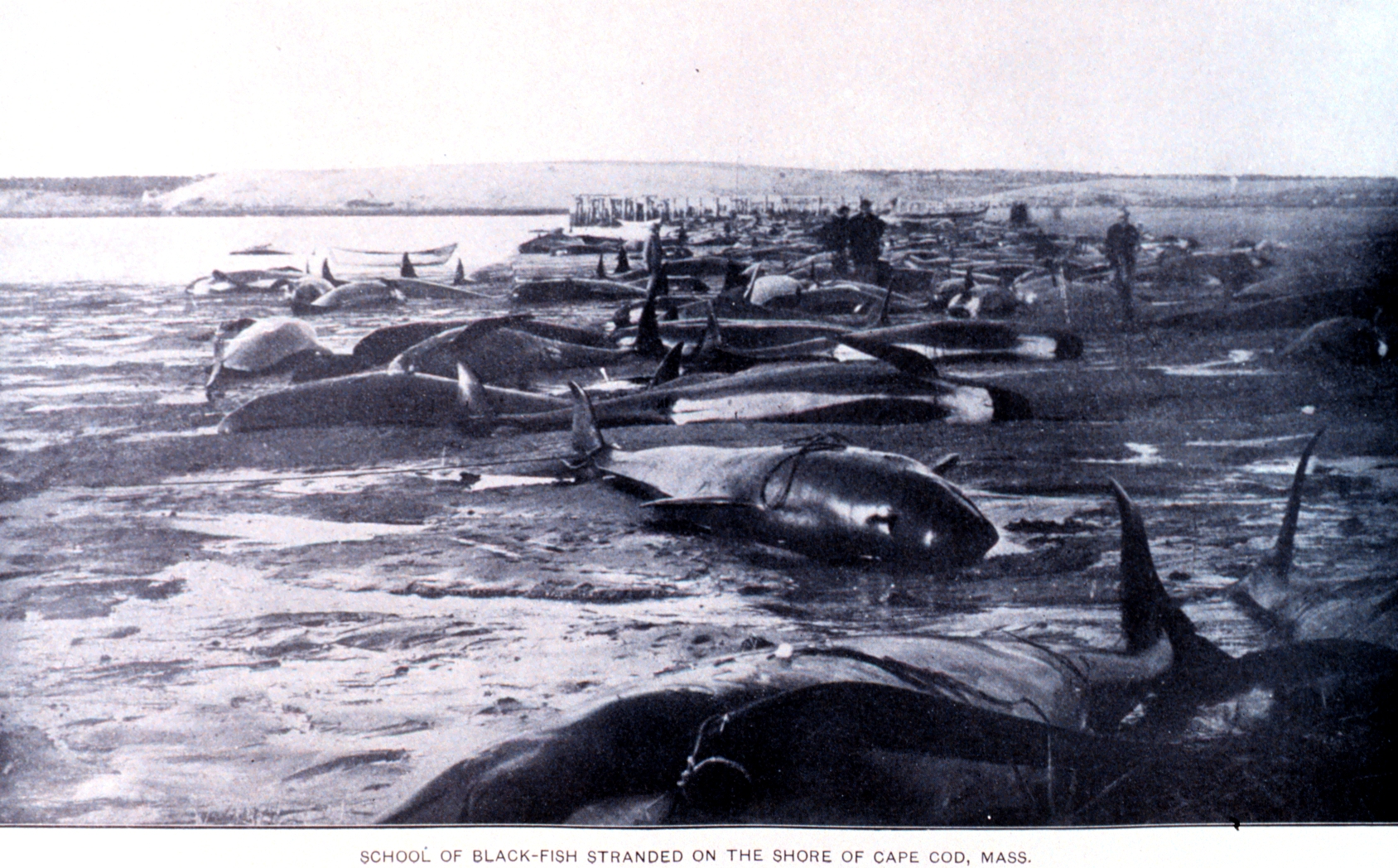On March 23rd of this year, news reports covered the mass stranding of 150 short-finned Pilot whales at Hamelin Bay (in Western Australia’s southwest). Of the 150-large pod that stranded, just five individuals were successfully returned to sea despite hours of volunteer effort. The news covered stories from the volunteers, their bonding experiences with the suffering whales and fellow good-doing strangers, but my questions about how and why the mass whale-suicide occurred, were left unanswered. Pilot whales, along with dolphins and other whale varieties, are members of the marine mammal group, cetaceans. Cetaceans are notorious for being the social ‘it group’ of the ocean, and are admired amongst marine scientists for their cleverness and resourcefulness. So how did such advanced and clever animals, capable of navigating migratory routes through vast oceans, and communicating between one another (and for some, even between species), find themselves stranded in the hundreds on the welcoming, sandy beach at Hamelin Bay?
One theory
The long history and global occurrence of stranding events, paired with the vast areas traversed during migrations, mean the causes and origins of cetacean strandings remain somewhat elusive to scientists. The most accepted explanation, is that coastline geomorphology and weather conditions have a significant role in triggering stranding, by interfering with the navigational aspects of cetacean echolocation. Echolocation (or biosonar) works by transmission of low-frequency sounds through the water, which are reflected off objects, the seafloor, underwater obstacles, other animals, etc. The returning echoes provide cetaceans with locational information which can then be used to navigate a route through deeper water, around obstacles, away from predators, etc. Scientists believe coastline slope to be important in the occurrence of whale strandings, with shallow sloping coastlines more likely to be stranding hotspots than steeper sloping coastlines. This is because the ‘clicks’ emanated during echolocation are well reflected in beaches with steeper slopes, whereas in shallower sloping beaches, the ‘clicks’ are absorbed rather than echoed back to the whale. Unreflected echoes mean the whale is not receiving any navigational or locational information about its surroundings, and is thereby effectively swimming blind. The whales can lose concept of depth and their proximity to the coast, and due to their follow-the-leader-style of travel, the ‘blindness’ of a pod leader can result in the misguidance of a whole pod to a shallow beach and a subsequent mass stranding.
In WA, coastal areas such as Hamelin Bay and Geographe Bay are characterised by shallow water and gently sloping coastlines. Both bays have a history of Pilot whale strandings, which has led to the terming of these beaches as ‘deaf spots’ or ‘whale traps’. In the recent case of the Hamelin Bay mass stranding, weather conditions were also believed to have been significant in the severity and size of the stranding event. Three cyclones were detected off the north coast of WA in the week leading up to the mass stranding. The cyclones were believed to have caused changes in the Leeuwin current (the primary southward flowing current bringing warm water from the north of WA down to the south Australian coast) and increased the presence of microbubbles in the water column, which have been previously suspected of interfering with effective echolocation transmission.
Another theory
Whilst likely not a factor in the events at Hamelin Bay, anthropogenically-derived underwater noise pollution is increasingly considered to be a driver of stranding events. In 2000, 17 multispecies cetaceans were mass stranded in the Bahamas. Of these 17, seven animals were unable to be returned to the water and died, and of those, six Beaked whales were autopsied to determine the cause of death. The Beaked whales autopsied were determined to be in good health and body condition, but further examination of the temporal regions and the acoustic fats revealed that the animals had experienced significant acoustic trauma prior to their beaching. The team investigating the stranding attributed the most likely cause of this trauma to nearby military activities, which had been transmitting mid-range frequency sonar for training exercises. It was believed that the prolonged period of naval sonar transmission, paired with the particular oceanography of the region, caused the haemorrhaging in the sound receptor tissues of the Beaked whales autopsied, and this injury drove the mass stranding event.
Many questions remain about the role of human-derived underwater noise in triggering stranding events. Wind farms, for example, have recently been thrown under the spotlight for their potential to cause auditory injury or behavioural modifications in cetaceans during turbine construction (ie. pile-driving). Whilst the realities of the impacts of wind turbines on cetacean health are still being determined, the possibility brings to light the need for us to consider the impacts of our new and evolving technologies on wildlife. The implementation of strategies to mitigate harmful effects of human generated underwater noise relies on understanding cetacean anatomy, biology, and physiology. Complete understanding of the environmental effects of our technological devices and underwater-based activities is also crucial. We are still unsure why clever cetaceans strand themselves on beaches in the hundreds. It seems a tragic waste of life for a group that has emerged triumphant from a bleak history of human slaughter. The grief we have inflicted on these animals over the last couple of centuries demands a lifetime of human repayment. Perhaps we could start by just leaving them alone now to rest, in silence?
Maddison Howard
Maddi is a keen bush walker, stress baker, and loves curling up with a book and cup of green tea.

